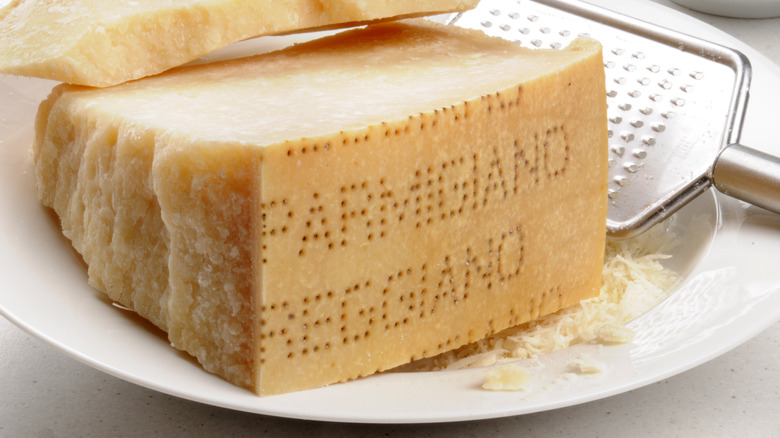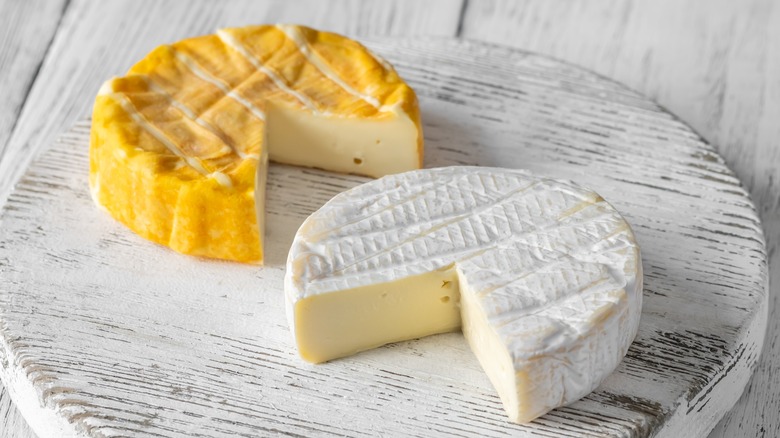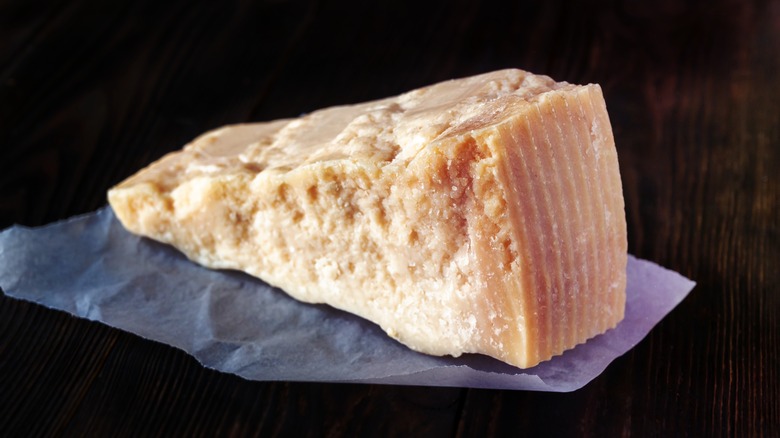Parmesan Rinds Make Unexpectedly Delicious Cheese Crackers
If you're a fan of freshly grated Parmesan cheese (and it's an undisputed fact that everyone who's eaten the salty-sweet flakes of grated Parm is a lifelong convert), then you've probably got a pie-shaped wedge sitting in the cheese drawer of your fridge. It's possible, depending on your enthusiasm, that you've been grating and slicing your wedge almost to the rind, with which you will then — do what? Throw away? Perish the thought! Parmesan rinds are almost entirely edible, useful in a ton of dishes, and — quickest and best of all — can be converted into salty, crunchy crackers with the help of a microwave and a modicum of effort.
How is this wondrous feat accomplished? Take your Parmesan rind, scrape off the waxy outer coating (where the letters are printed), and cut it into squares, rectangles, or whatever your preferred cracker shape is. Then wash 'em, dry 'em, and nuke 'em on high heat for one minute in the microwave. What will emerge are crisp little nuggets of deliciousness that'll make you even more of a Parmesan devotee.
Cheese rinds and why you should be eating them
The aging process of Parmesan cheese dictates how it will taste, and it also produces a protective rind. So while it may have a different color and texture, the rind is still entirely edible once you get rid of the thin layer of wax coating. Parmesan's natural coating is one of four types of cheese rind — three of which are edible. It's only the cheese coverings made from wax, bark, cloth, or paper that shouldn't be eaten, but you probably already knew that. But that white layer on the outside of a wheel of Brie? It's amazing.
What appears on the outside of Brie and Camembert is called a bloomy rind, which has a different flavor profile from the cheese itself — usually tasting more like mushrooms and loam. Washed rinds, like those that coat smelly cheeses, tend to be orangey-red and made with a salt brine and sometimes alcoholic flavoring agents like cider and wine. You're meant to eat the washed rind with fragrant cheese to get the full spectrum of flavors and textures, from salty and dense to creamy and intense.
Parmesan rinds have your back
You can use Parmesan cheese rinds in many other cooking applications: Toss one in the pot the next time you're making an Italian-style stock or soup. Do the same in your next batch of marinara, Bolognese (or any other long-cooking pasta sauce) as well as while cooking risotto — and remove the rinds before serving. They'll add an almost unidentifiable creamy, umami dimension to these dishes while becoming springy and delicious — so you can remove them from the pot and eat the rinds on their own.
There are more uses for Parmesan rind crackers besides immediate snacking. Should you have leftovers, use them to enhance your next charcuterie board concept or replace the croutons in a Caesar salad — they'll have all the requisite crunch while also adding an extra Parmesan dimension to the dressing. Crumble Parmesan rind crackers on top of casseroles and scalloped potatoes, or use them to garnish a bowl of minestrone or other rich soup. You can use them anywhere you'd include other cheese crackers. There's a lot of gastronomic mileage to get from something you might not have originally intended to eat.


